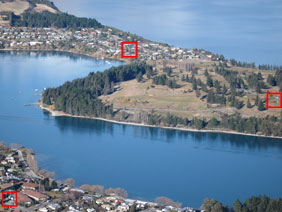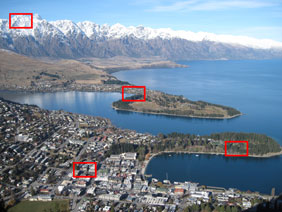Canon Digital IXUS 980 IS / PowerShot SD990 IS Digital ELPH
-
-
Written by Gordon Laing
Canon 980IS / SD990IS vs Fujifilm F60fd
Canon IXUS 980 IS / PowerShot SD990 IS |
Fujifilm FinePix F60fd | |
 |  | |
f8, 80 ISO |
f5, 100 ISO | |
 |  | |
f8, 80 ISO |
f5, 100 ISO | |
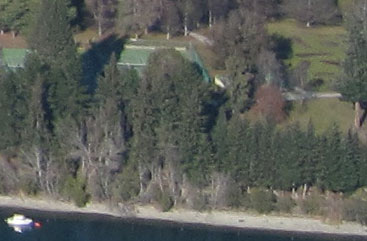 |  | |
f8, 80 ISO |
f5, 100 ISO | |
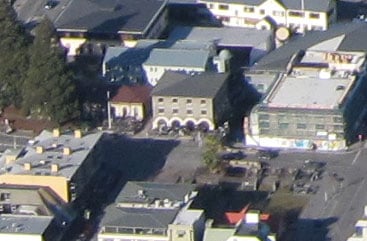 | 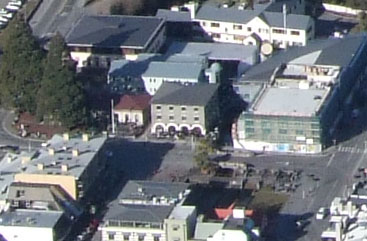 | |
f8, 80 ISO |
f5, 100 ISO |
To compare the optical performance of the camera when fully zoomed-in, we shot this scene with the Canon IXUS 980 IS / SD990 IS using its longest focal length – an equivalent of 133mm. As before, we used the best quality JPEG settings, lowest sensitivities and default processing options. The camera was once again set to Program – fully automatic, but allowing adjustment of the sensitivity. As mentioned above, the IXUS 980 IS / SD990 IS only has two aperture settings, but unlike our first example, it’s gone for the brighter of the two here. The image to the left was taken with the Canon IXUS 980 IS / SD990 IS at a sensitivity of 80 ISO, and the lens set to 28.5mm (133mm equivalent), f5.8; the original Large Fine JPEG file measured 4.02MB. The crops are taken from the areas marked with a red square and presented here at 100%. The IXUS 980 IS / SD990 IS may soften in the corners when zoomed-out, but performs much better at the other end of the scale with the lens fully zoomed-in. The overall image may be again lacking the consumer punchiness you’d expect for an IXUS / ELPH, but there’s no complaining about the sharpness across the frame. The first and third crops below were taken from the extreme edges of the image (and the former from the bottom corner), but they’re respectably sharp. This is a great result for the Canon, and remember it’s easy to boost the sharpening and contrast for a punchier image if desired. 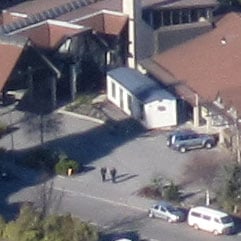 You can see more real-life examples across its focal range in our Sample Images Gallery, or alternatively to see how the camera compares in terms of high sensitivities, then head over to our Canon IXUS 980 IS / SD990 IS High ISO Noise results. |
Canon IXUS 980 IS / PowerShot SD990 IS telephoto performance: 100% crops | ||||
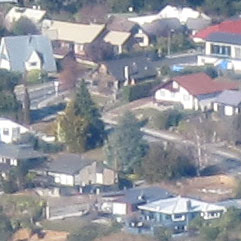 |
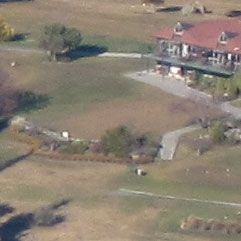 | |||
f5.8, 80 ISO (lower left crop) |
f5.8, 80 ISO (upper middle crop) |
f5.8, 80 ISO (far right crop) | ||
Resolution
The IXUS 980 IS / SD990 IS boasts the highest resolution in the IXUS / ELPH range to date with a considerable 14.7 Megapixels packed into a 1/1.7in sensor; indeed this is the same specification as the premium PowerShot G10, although the optics in front of it are quite different. In the first row of crops, minor coloured fringing is visible on both the IXUS 980 IS / SD990 IS and Fujifilm F60fd crops, although the former is suffering from more apparent softening in the corners of its image where this particular crop is taken from. To be fair, the F60fd isn’t pin-sharp either, but its slightly lower resolution is making any undesirable artefacts appear a little smaller and more discreet when both are viewed at 100%. In the second row of crops, the Canon is clearly applying less sharpening and contrast than the Fujifilm model, with a relatively restrained output as a result. The higher resolution IXUS 980 IS / SD990 IS has clearly delivered a tighter crop, although any benefit in terms of real-life detail is minimal at this point. Moving onto the third row of crops, the IXUS 980 IS / SD990 IS enjoys a noticeable boost in fine detail, although looking at the other crops, this is more likely thanks to superior optics at that point as oppose to higher sensor resolution. But still, a good result for the Canon. The fourth row of crops shows a similar situation to the second, with the IXUS 980 IS / SD990 IS enjoying a tighter crop, although one with little if any extra real-life detail. Look really closely and pixel-peepers may notice minor benefits in the Canon’s favour, but it’s pretty subtle. The biggest differences seen on this page have so far mostly been down to the optics, with the Canon softer in the first row, but sharper in the third. Overall, compared to other compacts, the Canon IXUS 980 IS / SD990 IS can certainly capture big images with plenty of detail, but not necessarily any more than a good model with 12 Megapixels. The lens in front of the sensor also obviously plays a critical role, and it’s interesting to compare our results and especially the gallery pages for the PowerShot G10 to see how much crisper it can look; to be fair though that is a much higher-end model. This first test here just considers one focal length with the camera fully zoomed-out, so lower down this page, we’ve taken a closer look at how the IXUS 980 IS / SD990 IS’s lens performs when fully zoomed-in. Check it out by scrolling down, but if you can’t wait to see how it compares in terms of high sensitivities, then head straight over to our Canon IXUS 980 IS / SD990 IS High ISO Noise results. |
